The top picture shows the icy surface of Europa. The icy surface might have a large ocean under it, inside of Europa. The bottom picture shows what the inside of Europa might be like. The blue is the possible ocean.
Click on image for full size
Images courtesy of NASA/JPL/ASU.
The Icy Galilean Moons of Jupiter
Jupiter has four big moons and a bunch of smaller ones. Three of the big moons - Europa, Ganymede, and Callisto - are covered with ice. That makes them a lot like Earth's frozen polar regions in some ways.
The surface of each of these moons is covered with ice. That doesn't mean all of the water in these moons is frozen. Scientists think these moons, especially Europa, might have salty oceans under their icy surfaces. Some places near Earth's poles have water under ice. Sea ice near the North Pole floats on top of the Arctic Ocean. There are also lakes in Antarctica thousands of meters beneath the polar ice sheet.
Water is a key ingredient for life. If there are oceans under the ice of Jupiter's moons, could there be life in those oceans? Astrobiologists are especially interested in Europa. Europa is hot inside. That's because it gets pulled and stretched by the gravity of Jupiter and the other moons. The same thing happens to Io. Io has lots of volcanoes because of this heat. Does Europa have volcanoes under its ice? Nobody knows for sure. If it does, it would be a lot like the hot water vents on the floor of the ocean on Earth. Those hot water vents have lots of living creatures around them. Could there be living creatures around hot vents under the ice on Europa?
You might also be interested in:
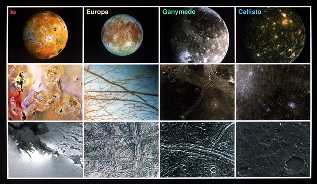
The Galilean satellites are the 4 big moons of Jupiter, Io, Europa, Ganymede, and Callisto. These moons are called Galilean because they were discovered by Galileo Galilei in 1610. In this picture, Io,
...more
Europa was first discovered by Galileo in 1610, making it one of the Galilean Satellites. It is Jupiter's 4th largest moon, 670,900 km ( miles) from Jupiter. Europa's diameter is about half the distance
...more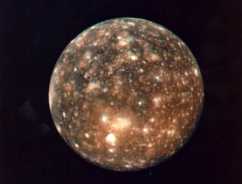
Callisto was first discovered by Galileo in 1610. It is the 2nd largest moon in the solar system, and is larger than the Earth's moon. It is about as big as the distance across the United States. Callisto
...more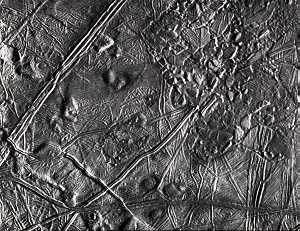
The surface of Europa shows many signs of that there may be an ocean hidden underneath: * flooded areas * 'freckles' * 'rafting' * 'mushy' craters, and * regions of spreading. These clues make it pretty
...more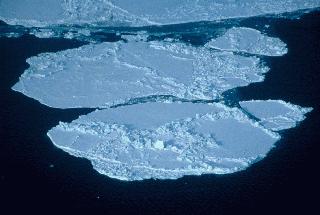
Sea ice is frozen seawater. It floats on the oceans that are in Earth's polar regions. The salt in the seawater does not freeze. Very salty water gets trapped in the sea ice when it forms. The pockets
...more
This page is not yet developed at the elementary level. Please check back for updates or click on the "Intermediate" button above for information.
...more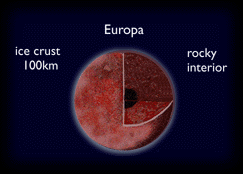
The diagram to the left shows the possible interior of Europa. The composition of the icy moons is mostly ice, therefore there is probably a small core of rocky material buried inside, covered with ice.
...more















